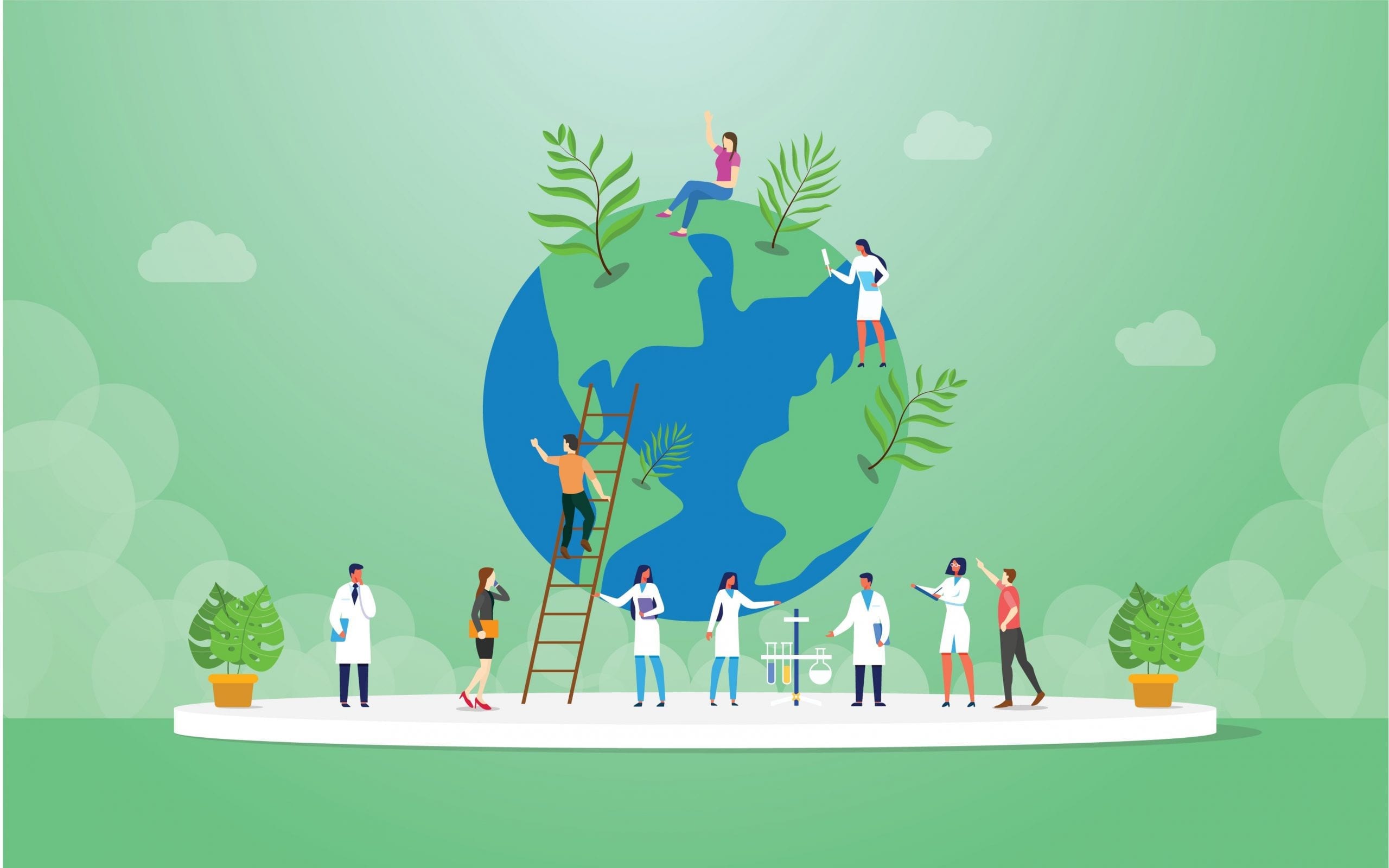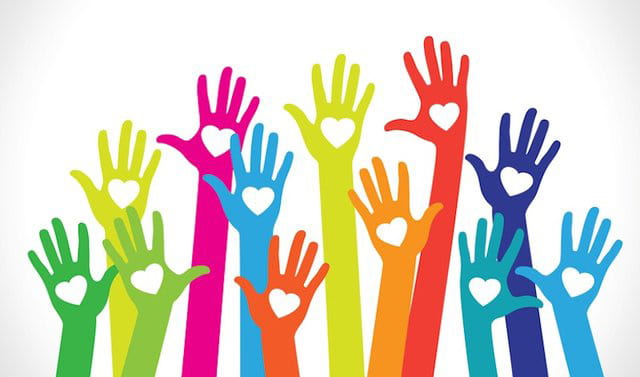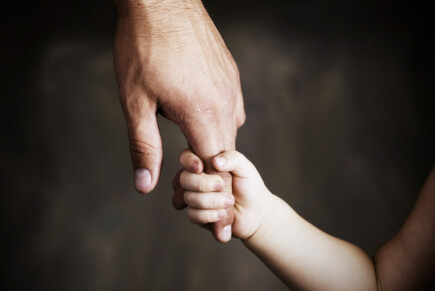
Umweltfolgen von Überschwemmungen und wie man der Umwelt helfen kann
Es dauert in der Regel Stunden oder sogar Tage, bis sich eine Überschwemmung entwickelt, sodass die Bewohner Zeit haben, sich vorzubereiten oder zu evakuieren. Aber manchmal geht alles schnell und ohne Vorwarnung, sodass Rettungsteams und die Organisation von Spendenaktionen erforderlich sind, um der Bevölkerung zu helfen.
Überschwemmungen treten am häufigsten auf, wenn Flüsse oder Bäche über die Ufer treten. Starker Regen, ein gebrochener Damm oder eine Deichmauer, schnelles Schmelzen des Eises in den Bergen oder ein überlaufender Fluss können diese Katastrophe verursachen. Überschwemmungen sind nach Waldbränden die zweithäufigste Naturkatastrophe auf der Erde. Die schrecklichen Folgen der Überschwemmungen für die Umwelt zeichnen sich ab und jeder sucht nach einer Möglichkeit, der Umwelt zu helfen .
Was sind die Hauptursachen für Überschwemmungen?
Überschwemmungen kommen natürlich vor. Sie sind Teil des Wasserkreislaufs und die Umwelt ist an sie angepasst. Feuchtgebiete an den Ufern von Flüssen, Seen und Flussmündungen absorbieren Hochwasser. Vegetation wie Bäume, Gräser und Farne verlangsamt die Geschwindigkeit von Überschwemmungen und verteilt ihre Energie gleichmäßiger.
Riesige Regenmengen, die an einem Ort fallen, führen oft zu Überschwemmungen und zur Zerstörung der Infrastruktur ganzer Regionen. Manchmal wird das Element durch andere Naturkatastrophen wie Erdbeben und Tsunamis ausgelöst.
Der Regen, der Hurrikane und Wirbelstürme begleitet, kann Küstengebiete schnell überschwemmen. Der während dieser Stürme auftretende Anstieg des Meeresspiegels wird als Sturmflut bezeichnet. Sturmfluten sind eine Art Küstenüberschwemmung. Diese Stürme können verheerende Folgen haben.
Es gibt mehrere Gründe, warum die Häufigkeit von Überschwemmungen im Laufe der Zeit zugenommen hat:
Globale Erwärmung : Die globale Erwärmung erhöht die Wahrscheinlichkeit extremer Wetterereignisse wie Hurrikane und tropische Stürme. Diese Ereignisse verursachen Überschwemmungen, indem sie größere Regen- oder Schneemengen auf einmal mit sich bringen.
Bevölkerungswachstum : Mehr Menschen bedeuten mehr Straßen, Häuser, Unternehmen und andere Bauwerke, die in der Nähe von Flüssen oder anderen Gewässern gebaut werden. Bauarbeiten führen oft zu Erosion. Kommt es zu einem extremen Wetterereignis wie einem Hurrikan oder einem Tropensturm, wird die verstärkte Bebauung den Boden schwächen und größere Schäden als zuvor verursachen.
Landnutzungsänderungen : Landnutzungsänderungen wie die Abholzung von Wäldern können den Abfluss von Regenfällen erhöhen und zu einem erhöhten Überschwemmungsrisiko führen.
Welche Schäden können Überschwemmungen anrichten?
Überschwemmungen gehören zu den teuersten und gefährlichsten Naturkatastrophen der Welt. Hier sind einige der negativen Auswirkungen von Überschwemmungen auf den Planeten.
Sie schädigen die Tierwelt
Wildtiere sind besonders anfällig für Überschwemmungen. Möglicherweise sind sie in einem Gebiet gefangen, aus dem es zu schwierig ist, zu entkommen, oder sie benötigen möglicherweise Zugang zu Gebieten, die reich an Nahrungsquellen sind. Überschwemmungen vertreiben Wildtiere aus ihren Behausungen und zerstören Eier und Jungtiere.
Zusätzlich zu diesen unmittelbaren Auswirkungen können Überschwemmungen auf lange Sicht verheerende Folgen haben. Sie führen häufig zur Zerstörung von Wald- und Feuchtgebieten.
Überschwemmungen können ganze Siedlungen zerstören
Überschwemmungen können auch für die in den betroffenen Gebieten lebenden Gemeinden verheerende Folgen haben. Sie beschädigen Häuser und Geschäfte sowie das soziale Gefüge der Gemeinschaft und zwingen die Menschen zur Evakuierung. Infolgedessen sind viele Menschen für längere Zeit ohne Wohnraum und auf staatliche Unterstützung für Nahrung, Unterkunft und Wohltätigkeitsaktionen angewiesen.
Starten Sie eine Kampagne auf PavelAndreev.ORG.
Überschwemmungen zerstören die lokale Wirtschaft, da Unternehmen aufgrund von Wasserschäden oder Stromausfällen schließen oder umsiedeln.
Sie führen zu Erosion und Sedimentation
Unter Erosion versteht man den Prozess, bei dem die Erdoberfläche durch den Kontakt mit Wind, Wasser oder Eis zerstört oder abgenutzt wird. Sedimentation entsteht, wenn Sedimente an einem bestimmten Ort abgelagert werden, wo sie nicht hingehören. Durch Überschwemmungen treten beide Prozesse in großen Mengen gleichzeitig auf. Erosion und Sedimentation zerstören die Vegetation und verhindern das Pflanzenwachstum aufgrund unzureichender Nährstoffe.
Ausbreitung und Ansteckung von Krankheiten
Überschwemmungen sind eine häufige Ursache für die Ausbreitung von Krankheiten und Umweltverschmutzung. Bei einer Überschwemmung fließen Abwässer in nahegelegene Flüsse, Seen und Trinkwasserquellen. Dies führt zu einer Verunreinigung der Wasserversorgung, die insbesondere für den Menschen gefährlich sein kann.
Eine Verunreinigung der Wasserversorgung führt zum Wachstum von Bakterien wie E. coli, Salmonellen und Cholera. Sie können tödlich sein, insbesondere wenn man nicht rechtzeitig eine Behandlung sucht.
Die Untersuchung der ökologischen Folgen von Überschwemmungen und Möglichkeiten, der Umwelt zu helfen, sind ein wichtiger Schritt.
So helfen Sie der Umwelt
Es ist sowohl finanziell als auch ökologisch zu teuer, immer höhere Schutzmaßnahmen gegen eindringendes Wasser zu errichten. Selbstverständlich lässt sich das Problem mit einer passenden Charity-Aktion lösen. Aber ehrlich gesagt gibt es eine völlig kostenlose und sehr effektive Möglichkeit, den Schaden einigermaßen zu „mindern“. Und es ist ganz einfach – nicht wahllos die Wälder abzuholzen und mehr Bäume zu pflanzen! Und nicht nur...
Wälder, Bäume, Hecken
Die Baumbedeckung fängt Niederschlag auf, sodass er mit weniger Kraft auf den Boden trifft und nicht so leicht abfließt. Bäume nehmen für ihr Wachstum Wasser auf, sodass ein Teil davon wieder in die Atmosphäre verdunsten kann. Noch wichtiger ist jedoch, dass ihre Wurzelsysteme dazu beitragen, dass Wasser in den Boden eindringt, was wiederum den Abfluss verringert.
Teiche, Sägemehl und Feuchtgebiete
Feuchtgebiete und Mulden in der Landschaft sammeln Wasser, speichern es in feuchten Perioden und geben es in trockenen Perioden langsam wieder ab.
Torfmoore
Sphagnum kann das 20-fache seines Gewichts an Wasser tragen!
Feuchtes Grasland
Grober Grasland ist eine äußerst effiziente Wasserspeicherung.
So helfen Sie den überschwemmten Gebieten
Mindestens zweimal im Jahr finden in unserem Land Wohltätigkeitskampagnen statt, um notleidende, überschwemmte Gebiete im Land zu unterstützen. Vergessen Sie nicht, dass Sie jederzeit eine Kampagne über die Website der Pavel Andreev Foundation, nämlich PavelAndreev.ORG, starten können
Überschwemmungen sind die Hauptursache für den Ausbruch wetterbedingter Infektionskrankheiten. Überschwemmungen erhöhen das Risiko der Ausbreitung von durch Wasser übertragenen Krankheiten wie Hepatitis A und Cholera. Zurückgehende Überschwemmungen können zu stehenden Gewässern führen, die den perfekten Nährboden für Mücken bieten, die Malaria und andere Krankheiten übertragen können. Deshalb sollten alle unsere Bemühungen darauf ausgerichtet sein, sie zu verhindern.

Wie hoch sind die ungefähren Kosten für die Veröffentlichung eines Buches?
Wenn Ihr Hauptziel lediglich darin besteht, Ihr Buch drucken zu lassen, ist die Verwendung kostenloser Self-Publishing-Plattformen möglicherweise die richtige Lösung. Für viele Menschen ist das Schreiben selbst die größte Belohnung, und das Veröffentlichen kann eine reine Formsache sein. Wenn Sie Ihr Buch jedoch verkaufen und ein breites Publikum erreichen möchten, müssen Sie in professionelle Dienstleistungen investieren. Ohne sie ist es schwier...

Was ist ein Philanthrop und Philanthropie?
Jeder kann ein Philanthrop sein und effektiver etwas bewirken. Hier erfahren Sie, wie. Ein Philanthrop ist eine Person, die Zeit, Geld, Erfahrung, Fähigkeiten oder Talent spendet, um zur Schaffung einer besseren Welt beizutragen. Jeder kann ein Philanthrop sein, unabhängig von Status oder Vermögen. Was ist Philanthropie? Der griechische Dramatiker Aischylos prägte im 5. Jahrhundert v. Chr. den Begriff Philanthropie. Es bedeutete „Liebe zur Men...

Narzisstische Geistesstörung: Symptome, Behandlung und wie wir helfen können
Psychische Gesundheit nimmt einen immer wichtigeren Platz in der Gesellschaft ein und das Interesse an diesem Thema nimmt deutlich zu. Psychische Erkrankungen betreffen weltweit eine große Zahl von Menschen. Eine der weniger bekannten Krankheiten, die sich auf die psychische Gesundheit auswirken, ist die narzisstische Persönlichkeitsstörung. Eine narzisstische Persönlichkeitsstörung ist eine Erkrankung, die oft unerkannt bleibt und zu noch größe...

So sammeln Sie schnell Geld für die Adoption eines Kindes
Kinder sind das größte Geschenk, das ein Mensch in seinem Leben bekommen kann! Und wenn Sie nicht dazu bestimmt sind, Eltern zu sein, haben Institutionen und Organisationen einen Weg gefunden, dieses Recht jedem zu geben, der das Herz und die Seele dazu hat. Statistiken aus Studien aus dem Jahr 2018 zufolge arbeiten 430.000 Kinder zugunsten von Pflegefamilien. Für adoptierte Kinder sind Heimat und vorbehaltlose Hingabe und Liebe äußerst wichtig....

